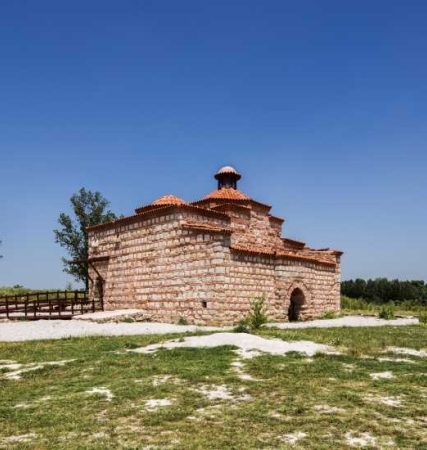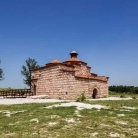The Kum Pavilion Bath is one of the few surviving buildings of the New Palace in Edirne. Located to the northwest of the Tunca River to the south of the embankment constructed by the D.S.İ., the bath has an organic connection with the adjacent Sand Pavilion. However, only the remains of the foundations of the pavilion adjacent to the bath from the northwest have survived to the present day.The Kum Pavilion Bath, located to the northeast of the square known as the Sand Square and the 2nd Courtyard of the palace, was built in the mid-15th century during the reign of Mehmet II. In addition to rough hewn and smooth cut stone, brick was used as construction material. Dome (in the coldness, warmth and temperature) and vaults (in the ashtray and temperature iwan) were used in the cover of the bath. It is understood that the interior wall surfaces were originally completely plastered, and the cover of the building has an externally screed concrete coating. It is known that the bath was used for military purposes in the 1960s and during this period, especially the inner wall surfaces of the cold room and the floor were covered with cement mortar. Again during this use, the living floor (pavement) was removed in the warmth and temperature sections of the bath and the floor of the inferno was reached.
The floor of the inferno floor of the building is paved with bricks. The bath, which consists of coldness, warmth, temperature, ashtray and water tank; although it does not belong to any group within the known typology of baths; it belongs to the group called "C" group by S. Eyice with its square temperature and the halvet arrangement opening on both sides. The bath is entered through a door in the center of the north facade. This door opens not to the outside but to a corridor connecting the bath with the adjacent Sand Pavilion. Instead of this door, which was blocked with rough hewn stone, a vertical rectangular door was opened at the northern end of the western façade of the building.


















